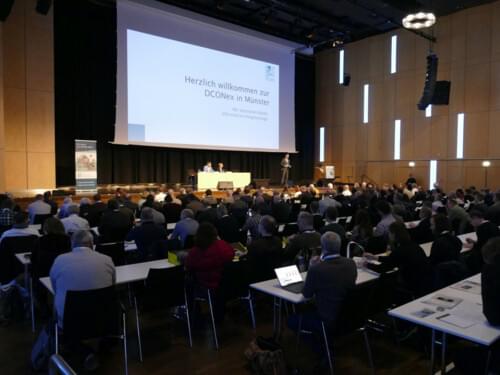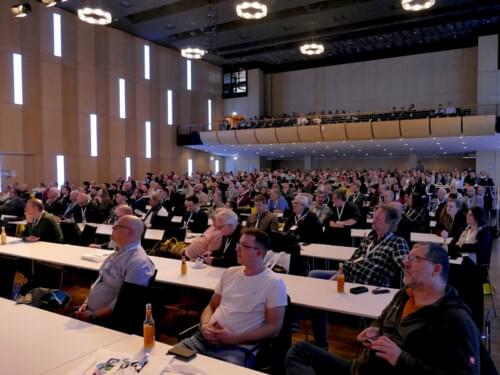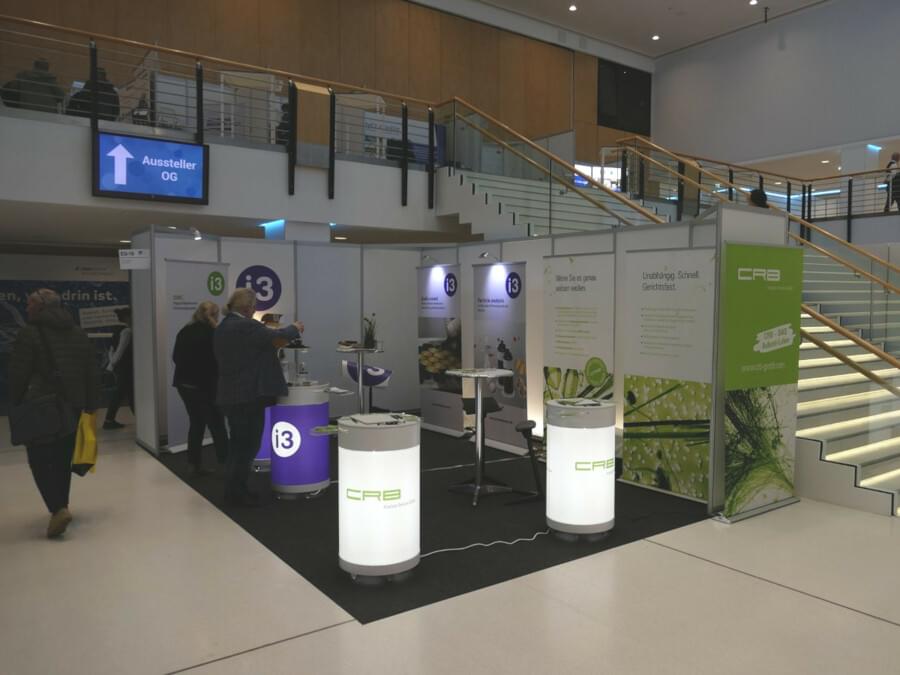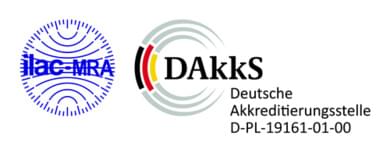DCONex 2025 follow-up report: Asbestos analysis and pollutant management in focus

As a first-class meeting place for the pollutant industry, DCONex attracted numerous experts to the Messe und Congress Centrum (MCC) Halle Münsterland in Münster at the end of January 2025. Our team was represented for the first time with a joint stand with our partner i3 Membrane. And as in the previous year, our colleague Dr. Gunnar Ries was once again able to moderate a block of presentations on current developments and issues in asbestos analysis.
What other topics were discussed at DCONex 2025? In this follow-up report, we summarize some of the important content of the leading specialist congress on the topic of hazardous substance management:
Amended Hazardous Substances Ordinance finally comes into force
The new version of the Hazardous Substances Ordinance has been a recurring topic at many of the recent events. It finally came into force on December 5, 2024, bringing national regulations into line with European law and the ongoing regulation of occupational health and safety. The most important contents and innovations include:
- Anchoring of the risk-based concept of measures for activities involving carcinogenic hazardous substances
- Introduction of the obligations of the initiator, although these were weakened in the final version: Instead of a duty to investigate, the building owner now only has to make a reasonable effort to obtain information
- Restrictions on the use of and activities involving asbestos (Section 11)
- Requirements for activities involving asbestos
How does the EU Asbestos Directive affect the Hazardous Substances Ordinance and TRGS 519?
The new EU Asbestos Directive brings changes to the Hazardous Substances Ordinance and TRGS 519. The differences between the European and national regulations include, for example, the fact that the EU creates a duty of investigation for owners, while the updated Hazardous Substances Ordinance leaves this duty to the employer. The biggest change concerns the limit values: According to the EU directive, a BOELV (Binding Occupational Limit Value) of 10,000 fibers/m³ will apply until the end of 2029 as the boundary between the areas of the basic measures and the additional measures. After that, thinner fibers (less than 0.2 µm) will also play a role.
Thin fibers are analytically challenging, especially since existing methods often do not capture them. Two scenarios arise: either thin fibers are taken into account and the limit value is kept at 10,000, which causes high costs, or thin fibers are ignored for the measurement result and the limit value is lowered to 2,000 fibers/m³. Both scenarios require adjustments, greater effort, and possibly AI support.
What happens during an asbestos analysis in the laboratory?

As many people do not have a clear idea of how an asbestos analysis works, this was also reported on at DCONex 2025. Asbestos analysis in the laboratory is complex but not magic. Samples are analyzed either without or with special preparation. Materials with a high asbestos content, such as fiber cement, require no additional processing. Others, such as plasters or adhesives, require techniques such as pulverization or hot ashing to make asbestos fibres accessible.
The asbestos content is usually determined qualitatively. Empirical values and tables help to estimate contents. Quantitative methods are semi-quantitative as they contain statistical uncertainties. Customer information on the sample type and quantity is essential for precise analyses. Laboratories like ours, therefore, greatly appreciate it when clients communicate the available data on the samples clearly and correctly.
Other exciting topics at DCONex 2025 at a glance
We also heard informative presentations on the following topics at DCONex 2025:
- The new VDI 6202 Sheet 10
- Visual methods and analysis according to VDI 3876
- Challenges in circular value creation in the construction sector
- New version of VDI 3492 - sampling strategy
- DGUV measurement program
- Chlorinated kerosenes
- Fibre size distribution in various materials
- PFAS in indoor spaces
If you would like to read more in-depth information on this topic, we recommend the detailed blog entries by our colleague Dr. Gunnar Ries:
Summary of DCONex 2025
The renowned trade congress with accompanying trade exhibition once again impressed with a highly interesting selection of topics. So it was not easy for us to decide which presentations we should listen to. Of course, we devoted ourselves most intensively to the sessions on asbestos analysis. We also enjoyed the professional exchange with other exhibitors, industry representatives, and congress participants at our joint stand with i3 Membrane. Thank you for the many stimulating discussions. We are already looking forward to the next DCONex on January 27 and 28, 2026.



